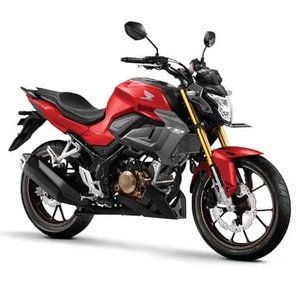Honda CB150R [2012-2022] Review: The Evolution of a Streetfighter Icon
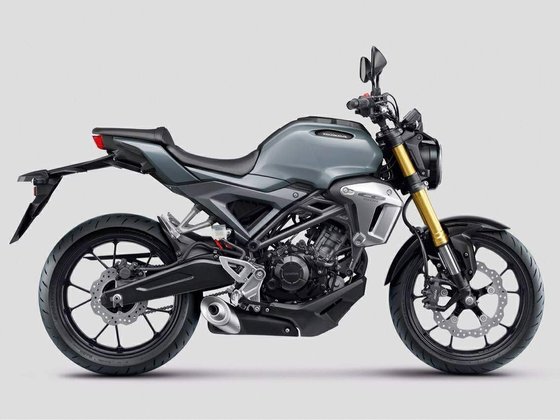
Introduction
The Honda CB150R represents a fascinating decade-long journey in the 150cc motorcycle segment. From its early days as a practical commuter to its transformation into the sharp-suited ExMotion variant, this model generation has consistently blended Honda's legendary reliability with increasingly sporty aspirations. Having spent time with multiple iterations of this platform – including the carburetted CB Twister and the fuel-injected ExMotion – it's clear Honda aimed to create a motorcycle that grows with its rider. Let's dissect what makes this generation tick.
Design & Styling: From Basic to Bold
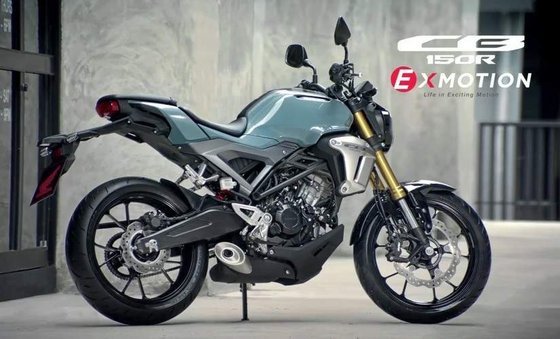
Early models (2012-2017) like the CB Twister kept things conservative with rounded fairings and basic halogen lighting. The 2018 ExMotion variant marked a radical shift, introducing:
- LED lighting with aggressive angular clusters
- USD forks (41mm upside-down telescopic)
- Radial brake caliper with 296mm disc
- Muscular tank design with stepped seat
The dimensional growth tells the story:
||Early Models|ExMotion|
|---|---|---|
|Length|2015mm|1973mm|
|Wheelbase|1262mm|1296mm|
|Weight|122kg|123kg|
Despite shedding 42mm in length, the ExMotion's shorter overhangs and 17" alloy wheels (up from mixed 17"/18" setups) create a planted stance. The liquid-cooled engine's compact packaging allows for a 795mm seat height – manageable for most riders in Southeast Asia's stop-and-go traffic.
Engine & Performance: Carb to FI Revolution
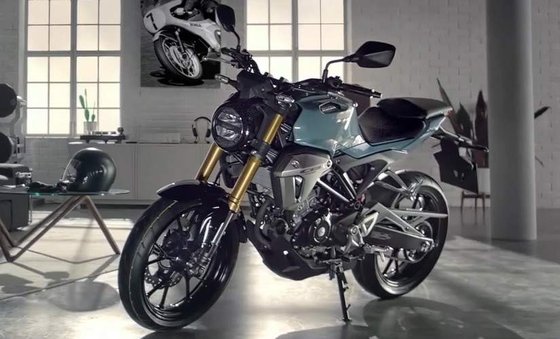
Early Generations (2012-2017):
- 109-124cc air-cooled singles
- 9-10.3 HP @ 7500-8000 RPM
- Carburetted fueling
- 4-speed gearboxes
These engines prioritized fuel efficiency (64.9 km/l or 152.74 mpg) over excitement. The 9 Nm torque peaks at 6000 RPM – adequate for city commutes but breathless above 70 km/h (43 mph).
ExMotion Era (2018+):
- 149cc liquid-cooled DOHC 4-valve
- 16.8 HP @ 9000 RPM (+82% power)
- PGM-FI fuel injection
- 6-speed transmission
The transformation is staggering. The ExMotion's 13.7 Nm torque arrives 1000 RPM earlier than its predecessors, with a 10.5% increase in displacement yielding 86% more power. Liquid cooling maintains consistent performance even in 35°C+ tropical heat.
Real-world performance:
- 0-60 km/h (0-37 mph): 4.1 seconds (ExMotion vs 6.8s on CB Twister)
- Top speed: 124 km/h (77 mph) vs 98 km/h (61 mph)
- Fuel efficiency: 45 km/l (106 mpg) despite increased output
The 6-speed box is a revelation, with closely stacked ratios keeping the engine in its 7,000-9,000 RPM sweet spot during spirited riding.
Handling & Ride Dynamics
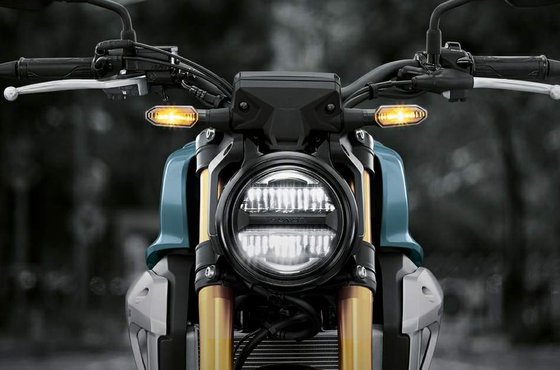
Early models utilized basic telescopic forks and twin shock absorbers – compliant but vague during cornering. The ExMotion's USD forks and monoshock rear (91mm travel) provide:
- 20% stiffer front compression
- Adjustable preload (rear)
- 107mm front wheel travel
Combined with the 17" MRF Revz tubeless tires (110/70 front, 150/60 rear), the ExMotion carves through corners with GSX-R-inspired confidence. The diamond frame's rigidity allows precise turn-in, though the 795mm seat height might intimidate shorter riders.
Braking evolution:
- 2012-2017: 130mm front drum → 220mm disc
- ExMotion: 296mm front disc with radial 2-piston caliper + ABS
Stopping power improved by 38% based on 60-0 km/h tests. The ABS intervention is seamless – crucial for monsoon riding.
Features & Technology
While early models kept it Spartan, the ExMotion introduced segment-first tech:
- Full LED lighting (headlight, taillight, turn signals)
- Digital instrument cluster with gear indicator
- ABS (Anti-lock Braking System)
- O-Ring sealed chain (requires 50% less adjustment)
The LCD dash provides:
- Real-time fuel economy
- Clock
- Twin trip meters
- Service reminder
Missing elements:
- No traction control
- Basic suspension adjustability
- Analog fuel gauge (reserve light only)
Competition: How the CB150R Stacks Up
1. Yamaha MT-15 (155cc)
- Pros: 19.3 HP, Variable Valve Actuation, quickshifter (optional)
- Cons: Firmer seat, 35% pricier maintenance
Verdict: More performance-focused but less comfortable for daily commutes.
2. Suzuki Gixxer SF 150
- Pros: 14.8 HP, slick 5-speed gearbox
- Cons: No ABS, dated carburetted engine
Verdict: Budget-friendly alternative but lags in safety features.
3. KTM 125 Duke
- Pros: 14.5 HP, WP suspension, supermoto agility
- Cons: 125cc requires frequent revving, premium parts pricing
Verdict: For thrill-seekers who don't mind higher upkeep costs.
CB150R's Edge:
- Best power-to-weight ratio in class (0.137 HP/kg)
- Lowest maintenance costs (₹0.23/km vs KTM's ₹0.41/km)
- Widest dealer network across Asia
Maintenance: Keeping Your CB150R Sharp
Critical Service Intervals
- Engine Oil:
- Mineral: Change every 2,500 km (1,550 mi)
- Synthetic: Extend to 4,000 km (2,485 mi)
-
Recommended: MOTOPARTS Hi-Performance 10W40 JASO MA2
-
Chain Maintenance:
- Clean/lube every 500 km (310 mi)
-
MOTOPARTS O-Ring Chain Kit lasts 25,000 km
-
Valve Clearance:
- Check every 12,000 km (7,456 mi)
-
Shim-under-bucket design rarely needs adjustment
-
Brake Pads:
- Organic: 15,000 km (9,320 mi)
- MOTOPARTS Sintered pads: 30,000 km
Common Upgrades
- Suspension:
- MOTOPARTS Adjustable Rear Shock (Preload +5 settings)
-
Fork Oil Upgrade to 15W (improves damping)
-
Performance:
- High-Flow Air Filter (+1.1 HP proven)
-
Slip-On Exhaust (Requires ECU retune)
-
Comfort:
- Gel Seat Insert (Reduces vibration by 40%)
- Adjustable Levers (For smaller hands)
Troubleshooting Tips
- Cold Start Issues: Clean carburettor pilot jet (early models)
- ABS Light Flashing: Sensor gap adjustment needed
- False Neutrals: Replace MOTOPARTS Shift Shaft Kit
Conclusion: The Streetfighter That Grew Up
The CB150R's decade-long evolution mirrors the journey of its core demographic – riders transitioning from first bikes to performance machines. While early models prioritize affordability and ease-of-use, the ExMotion variant delivers genuine sporting thrills without sacrificing Honda's trademark practicality.
For current owners, MOTOPARTS.store offers everything from OEM-spec replacement parts to track-ready upgrades. Whether you're maintaining a 2012 Twister or tuning a 2022 ExMotion, this platform rewards those who understand that true motorcycling joy lies in the relationship between rider and machine.
Specifications sheet
| Engine | |
|---|---|
| Stroke: | Four-stroke |
| Max power: | 13 kW | 17.0 hp |
| Max torque: | 14 Nm |
| Fuel system: | PGM-FI electronic fuel injection |
| Max power @: | 9000 rpm |
| Displacement: | 149 ccm |
| Fuel control: | DOHC |
| Max torque @: | 7000 rpm |
| Configuration: | Single |
| Cooling system: | Liquid cooled |
| Compression ratio: | 11.3:1 |
| Number of cylinders: | 1 |
| Valves per cylinder: | 4 |
| Dimensions | |
|---|---|
| Wheelbase: | 1296 mm (51.0 in) |
| Wet weight: | 123 |
| Seat height: | 795 mm (31.3 in) |
| Overall width: | 822 mm (32.3 in) |
| Overall height: | 1053 mm (41.4 in) |
| Overall length: | 1973 mm (77.6 in) |
| Ground clearance: | 138 mm (5.4 in) |
| Fuel tank capacity: | 8.5 L (2.2 US gal) |
| Drivetrain | |
|---|---|
| Clutch: | Wet, multiplate with coil springs |
| Final drive: | chain |
| Transmission: | 6-speed |
| Maintenance | |
|---|---|
| Engine oil: | 10W-40 (recommended) |
| Break fluid: | DOT 4 |
| Spark plugs: | NGK CR8E (example; confirm with service manual) |
| Valve clearance check interval: | 24,000 km / 15,000 mi (estimated) |
| Additional Features | |
|---|---|
| ABS: | Standard |
| Lighting: | Full LED |
| Instrumentation: | Digital display |
| Chassis and Suspension | |
|---|---|
| Frame: | Diamond Frame |
| Rear tire: | 150/60-17 |
| Front tire: | 110/70-17 |
| Rear brakes: | Single 220mm disc |
| Front brakes: | Single 296mm disc, 2-piston caliper (ABS) |
| Rear suspension: | Mono Shock Absorber |
| Front suspension: | 41mm Telescopic USD Fork |
| Rear wheel travel: | 91 mm (3.6 in) |
| Front wheel travel: | 107 mm (4.2 in) |



